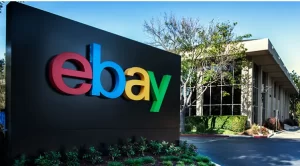Is Amazon the Only Option? Think Again!
When people think of online shopping, Amazon often comes to mind first. But did you know there are plenty of other e-commerce platforms that offer great alternatives—some with lower fees, niche markets, or better seller support? Whether you’re a seller looking for new opportunities or a shopper searching for unique products, exploring different platforms can open up exciting possibilities. Here are 15 e-commerce platforms that are giving Amazon a run for its money!
Global E-commerce Platform
eBay

Founded in 1995, eBay is one of the world’s earliest e-commerce platforms, headquartered in California, USA. Its core model is C2C and auction mechanism, allowing individuals or small businesses to trade second-hand goods, collectibles, niche goods, etc. through bidding or one-bite price. As of 2025, eBay covers more than 190 countries and regions, and users can conduct transactions through localized sites (e.g., eBay US, UK, etc.). The platform features long-tail goods (rare items, personalized goods) and flexible pricing.
Core differences between eBay and Amazon
1. Business models and types of sellers
● eBay: Started as an auction model and later expanded to fixed-price sales, focusing on C2C and small B2C.
Sellers are mostly individuals or small and medium-sized merchants, and their products are mainly second-hand, collectibles, and non-standard products.
● Amazon: B2C self-operated (Amazon Retail) and third-party merchants, focusing on standardized products and new products.
The proportion of large brand names is higher, and the product categories are concentrated in standardized products such as electronic products, daily necessities and books.
2. Fee structure and logistics
● eBay: Fees include listing fees (product listing fees) and transaction fees (about 10-15% commission), no warehousing fees.
No warehousing fees. Logistics are handled by sellers themselves, and the platform does not force a unified logistics system.
Amazon: Fees are mainly commission (about 8-20%) and FBA (Fulfillment by Amazon) storage and logistics fees.
● Amazon: Fees are based on commissions (about 8-20%) and FBA (Fulfillment by Amazon) warehousing and logistics fees.
If you need to find second-hand or niche goods at a low price, eBay is a better choice; if you pursue efficient shopping, authenticity and integrated services, Amazon has more advantages. For sellers, eBay is suitable for small merchants with light assets, while Amazon is suitable for brands with supply chain strength.
Walmart Marketplace

Walmart Marketplace is a third-party e-commerce platform launched by Walmart in 2009 (with accelerated expansion after 2023) that allows external merchants to sell goods directly to consumers, complementing Walmart’s own merchandise. As of 2025, the platform has attracted over 200,000 sellers, covering markets in the U.S., Canada, and Mexico, with merchandise categories expanding from home and electronics to fresh produce and fashion.
Core differences between Walmart Marketplace and Amazon
1. Business model and targeting
● Walmart Marketplace: Positioned as a “one-stop platform for daily household purchases”, focusing on low-priced daily necessities and FMCG products.
●Amazon: covering all categories (including high-customer-price 3C products, cloud services, etc.), open entry (support for individual sellers), more than 6 million third-party sellers in 2025, and more intense competition.
2. Seller strategy and product characteristics
Walmart Marketplace: strict control of product quality: prohibit second-hand products, require new products and in line with Walmart’s brand tone (e.g., family-friendly products).
● Amazon: more inclusive: allows used, refurbished, and handmade products (e.g., Handmade platform), and supports long-tail products (e.g., collectibles).
3. Logistics and supply chain integration
● Walmart Marketplace: relies on WFS (Walmart Fulfillment Services):
Stores are warehouses: using physical store inventory to realize “30-minute pickup” and “same-day delivery”, and the delivery efficiency of fresh goods is significantly higher than that of Amazon Fresh.
● Amazon: FBA as the core: more than 200 fulfillment centers around the world, supporting next-day delivery for Prime members.
If the merchant’s supply chain is stable and the pursuit of thin margins, Walmart Marketplace’s low commissions and offline linkage are more attractive; if globalized exposure and high-premium category support are needed, Amazon is still the preferred choice.
Rakuten

Rakuten is a Japan-based e-commerce and Internet services company founded in 1997. It began as an online shopping platform and has grown into a global enterprise covering a wide range of fields including e-commerce, fintech, digital content, communications, etc. Rakuten has a strong market share in its home country of Japan, and operates in a number of countries in Europe, the United States, Asia, and elsewhere.
1. Business model and targeting
● Rakuten: Positioned as an “open online shopping center”, Rakuten emphasizes personalized and diversified shopping experiences for consumers, with a focus on independent merchant operations and brand personality. It is committed to cultivating long-term user loyalty through point rebates and promotional activities.
● Amazon: Covering a full range of categories, from daily necessities to high-tech products and cloud services, it is a one-stop shop to meet consumers’ needs. Focusing on standardized shopping experience and fast, efficient logistics and distribution services, it attracts a large number of third-party sellers, making the competition pattern more intense.
2. Seller Strategies and Product Characteristics
● Rakuten: Allows merchants to set up independent stores, operate their own brands and interact with consumers, and encourage brand storytelling and differentiated experiences. Competition among sellers relies more on personalized service and brand loyalty.
● Amazon: The platform adopts unified standards for product display and service, and third-party sellers rely on platform algorithms and FBA logistics to gain advantages, while accommodating new, used, refurbished, and customized products, making competition more diverse.
3. User experience and member services
● Rakuten: Focuses on creating a unique user experience through points rebates, preferential activities and personalized stores, encouraging users to return and participate in the long term.
● Amazon: focusing on standardized and convenient shopping process and excellent customer service, the Prime membership system provides value-added services such as free delivery and video streaming to create a one-stop shopping experience.
Etsy

Etsy is a globally recognized online marketplace specializing in handmade crafts, vintage goods and unique creative designs. Founded in 2005, it provides a platform for small sellers, crafters, and independent designers to showcase and sell their work, attracting a large number of consumers looking for personalized and customized goods.Etsy’s core categories include handmade jewelry, home décor, apparel accessories, artwork, stationery, and wedding supplies, as well as allowing the sale of vintage merchandise that is more than 20 years old.
Business Model and Targeting
●Etsy: Focusing on handicrafts, vintage goods and customized goods, mainly attracting creative sellers and consumers pursuing unique and personalized goods, focusing on niche markets and artistic design.
●Amazon: covering a full range of categories, from daily necessities to high-tech products and cloud services, one-stop to meet consumers’ needs, focusing on standardized shopping experience and fast, efficient logistics and distribution services, targeting the mass market.
Seller strategy and product characteristics
●Etsy: encourages independent designers and small creative studios to set up stores, focusing on the originality and uniqueness of products, with competition among sellers relying more on creativity and brand stories.
●Amazon: The platform allows all kinds of sellers to move in, from individual sellers to big brands, adopts a unified standard for product display and service, supports new, second-hand, refurbished and customized products, and the forms of competition are more diversified.
Newegg
Founded in 1997 and headquartered in Japan, Rakuten is a comprehensive e-commerce and Internet services company. Based on an “open online shopping mall” model that allows merchants to operate their stores independently and promote user loyalty through incentives such as points and rebates, Rakuten emphasizes personalized shopping experiences and brand storytelling, with a focus on Japan and gradual expansion globally.
Difference between Newegg and Amazon
Business model and targeting
Newegg: focuses on electronic products and PC hardware market, mainly for technology enthusiasts and professional users, dedicated to providing in-depth technical product information and professional evaluation. b. Amazon: covers all categories, from daily necessities to high-tech products.
Amazon: covering all categories, from daily necessities to high-tech products, one-stop to meet the diverse needs of mass consumers, focusing on standardized shopping experience and efficient logistics services.
Seller strategy and product characteristics
Newegg: Sellers on the platform mainly focus on technology and electronics, with the latest electronic products, computer hardware and accessories as the main products, focusing on the technical parameters and professional performance of the products.
Amazon: the platform allows all kinds of sellers to set up, covering a variety of commodity forms from brand new, second-hand to refurbished, etc., with an extremely rich variety of commodities and more diversified competition.
Market Size and Competitive Environment
Newegg: as a mainstream platform in the field of electronic products and PC hardware, it has a high degree of professionalism and brand recognition in the technical product market, but the market scope is relatively narrow.
Amazon: as one of the world’s largest e-commerce platforms, the market covers a wide range of categories with fierce competition, and sellers are constantly jockeying for position in terms of price, service and logistics.
Shopify

Shopify is a powerful e-commerce platform that allows merchants to easily create and manage online stores. It offers rich templates and highly customizable options for businesses of all sizes. With Shopify, merchants can easily handle product management, payment processing, order tracking, and marketing campaigns, supporting multiple sales channels, including social media and marketplaces. Additionally, Shopify’s robust application integrations and 24/7 customer support allow merchants to focus on growing their business and enhancing the customer experience.
Business Model and Targeting
Shopify: provide merchants with a platform to build independent online stores, help merchants to build and operate their own brand website. The goal is to give merchants complete autonomy and brand control.
Amazon: As a large-scale online marketplace, Amazon allows all kinds of sellers to sell their products on its platform, with the goal of providing consumers with a one-stop shopping experience, while utilizing the platform’s own huge traffic and logistics advantages to attract buyers.
Seller strategy and product display
Shopify: sellers can customize the store design and user experience, have an independent domain name and complete brand story display space, marketing and promotion mainly rely on the introduction of the merchant’s own traffic.
Amazon: sellers compete in a unified marketplace, product display and store design is limited by the platform’s unified standards, the traffic mainly comes from Amazon’s search and recommendation algorithms.
Fees and Operating Costs
Shopify: usually adopts a subscription fee model, paying monthly or annual fees according to the selected package, and sellers can choose appropriate services and features according to their business needs.
Amazon: mainly charges through sales commission, platform fee and FBA service fee, sellers need to share the platform cost in the sales, and the competition pressure is higher.
TikTok Shop
TikTok Shop is an e-commerce feature launched by TikTok to help merchants sell their goods directly within the platform. It seamlessly combines short videos, live streaming and shopping, allowing users to place orders and buy directly while browsing content. For merchants, TikTok Shop provides rich traffic support, relying on the platform’s powerful algorithms and interest recommendations to help goods accurately reach potential buyers. In addition, merchants can increase the conversion rate through short-video grass-raising, live-streaming of goods, and cooperation with celebrities, while enjoying the one-stop services provided by the platform, such as payment, logistics and customer service, to reduce operating costs and improve sales efficiency.
The Difference Between TikTok Shop and Amazon
Business model and targeting
TikTok Shop: relying on social media content, emphasizing on bringing goods through short videos and live broadcasting, mainly targeting young users and consumers who pay attention to social experience.
Amazon: mainly focuses on full-category retailing, standardized shopping experience and efficient logistics, with the goal of providing consumers with one-stop shopping services.
Traffic Sources and User Interaction
TikTok Shop: Traffic mainly comes from the platform’s content recommendations and social interactions, with users generating interest in shopping by watching creative videos and live broadcasts.
Amazon: relies on search, advertising and platform recommendations, and users’ shopping decisions are mostly based on product reviews and price advantages, with low interaction.
Marketing Strategy and Promotion Methods
TikTok Shop: merchants conduct content marketing through short videos and live streaming, focusing on real-time interaction and brand story dissemination, with a more flexible and creative marketing approach.
Amazon: mainly relying on product page optimization, advertising (e.g. Amazon PPC) and price competition, marketing strategy is more standardized and data-driven.
Temu

Temu is a cross-border e-commerce platform under Pinduoduo, which focuses on ultra-low price strategy and cost-effective goods. For merchants, Temu provides a channel to enter the international market, helping them attract global consumers with a lower price advantage. The platform focuses on rapid up-selling and large-scale traffic acquisition, and merchants can utilize Temu’s cross-border resources and Jinduoduo’s supply chain advantages to achieve a low-cost, high-volume sales strategy.
Difference between Temu and Amazon
1. Business model and targeting
Temu: Relying on JD.com’s low price advantage and supply chain resources, Temu is positioned as a cross-border e-commerce platform, focusing on ultra-low price and cost-effective, attracting global consumers in pursuit of low-priced shopping.
Amazon: covering a full range of categories, positioned as a one-stop shopping platform, focusing on standardized shopping experience, efficient logistics and quality customer service to attract consumers at all levels.
2. Pricing strategy and market competition
Temu: adopts a very competitive low price strategy to reduce costs through large-scale procurement and supply chain integration, attracting buyers who emphasize on value for money.
Amazon: Although there is also price competition, it pays more attention to product diversity, brand trust and delivery services, and the competition focuses on service quality and user experience.
3. Traffic acquisition and promotion methods
Temu: Relying on Jinduoduo’s huge user base and cross-border e-commerce promotion strategy, it quickly attracts users through social media, promotional activities and internal platform traffic support.
Amazon: Relying on the advantages of the globalized platform, it obtains traffic through search engine optimization, intra-platform advertising (such as Amazon PPC) and algorithmic recommendation, and its traffic sources are more mature and standardized.
Overall, Temu emphasizes low price strategy and rapid expansion of cross-border e-commerce, suitable for merchants who wish to gain share in the global market through price advantage; while Amazon focuses on full-category, multi-dimensional services and quality user experience, attracting consumers in pursuit of a comprehensive shopping experience.
Regional E-Commerce Platforms
Flipkart

Flipkart is one of India’s largest e-commerce platforms, offering a vast marketplace for sellers to reach millions of customers. It provides businesses with tools for inventory management, secure payment processing, and marketing support. Sellers benefit from Flipkart’s logistics network, making order fulfillment and delivery easier. With various promotional opportunities and a large customer base, Flipkart is a strong choice for businesses looking to expand in the Indian market.
Difference between Flipkart and Amazon
Market Positioning and Geographical Advantages
Flipkart: focusing on the Indian market, deeply cultivating the needs and shopping habits of local consumers, and providing products and services that meet the preferences of Indian consumers.
Amazon: Although it also operates in India, it relies on global resources and standardized operation mode to provide a wider range of services, and some of its processes and products are more internationally oriented.
Localized Services and Payment Methods
Flipkart: more focus on localization strategies, such as support for cash on delivery, local promotions and local language services, to make in-depth customization for the Indian market.
Amazon: Although providing localized services in India, it still adopts more globally unified standards and processes in payment and logistics.
Logistics and Distribution System
Flipkart: Work closely with local logistics partners to better understand and adapt to the distribution challenges of the Indian market and ensure efficient distribution services in the local market.
Amazon: relying on the global logistics network and self-built warehousing system (such as FBA), in India is also improving local distribution, but the overall system is more internationalized.
MercadoLibre
MercadoLibre is the largest e-commerce platform in Latin America, covering multiple countries such as Brazil, Argentina and Mexico. For merchants, it provides an excellent opportunity to enter the multi-country Latin American market. The platform not only supports online sales, but also integrates a series of tools such as payment, logistics and advertising to help merchants better manage orders and expand their business. With an in-depth understanding of the local market, MercadoLibre provides localized services and customer support to help merchants quickly build brand trust and adapt to local consumer needs.
Differences between MercadoLibre and Amazon
Market Positioning and Geographical Advantages
MercadoLibre: Focusing on the Latin American market, MercadoLibre is deeply committed to the shopping habits and localized needs of consumers in the region, and helps merchants provide customized services for different countries.
Amazon: as a globalized platform with layouts in various regions, it emphasizes a standardized and globally uniform shopping experience, which is suitable for covering a wider range of international markets.
Payment and Logistics System
MercadoLibre: Embedded with localized payment systems (such as MercadoPago) and logistics services, it is optimized for the complex payment and distribution environment of the Latin American market, helping merchants to cope with the special challenges in cross-border trade.
Amazon: has a global self-built logistics network (e.g., FBA), standardized processes are more suitable for large-scale operations, but may lack the flexibility of localization in some regions.
Consumer Trust and Shopping Experience
MercadoLibre: with in-depth understanding of Latin American consumers’ habits, it provides a shopping experience that is more in line with local culture and service expectations, and consumers have a higher degree of trust in the platform.
Amazon: Relying on global brand influence and efficient service, standardized experience and strict evaluation system to attract a large number of loyal users, but may not be as flexible as MercadoLibre in terms of localized experience.
Lazada 
Differences between Lazada and Amazon
1.Market Positioning and Geographical Advantages
Lazada: Focusing on Southeast Asia market, Lazada is deeply committed to localized operation and provides customized services according to the consumer habits and language environment of different countries.
Amazon: as a global platform covering multiple countries and regions, it adopts a unified and standardized operation model and pays more attention to the one-stop shopping experience worldwide.
2.Payment and logistics system
Lazada: integrates local payment methods and logistics network in the region, optimized for the distribution challenges in the Southeast Asian market, supports multi-currency transactions and local cash on delivery and other special services.
Amazon: has a mature and unified global logistics network (e.g. FBA), with obvious advantages in delivery speed and standardized services, but weak localization flexibility.
3.Platform Services and Seller Support
Lazada: Provides merchants with localized marketing tools, data analysis and promotional support to help brands better enter and operate the Southeast Asian market.
Amazon: provides globally unified seller tools and advertising services. The competitive environment is more intense, and sellers need to rely on the platform’s big data and advanced logistics system to enhance competitiveness.
Shopee

Shopee is the leading e-commerce platform in Southeast Asia, focusing on providing simple and easy-to-use cross-border e-commerce solutions for merchants. The platform supports multi-language and multi-currency transactions, and integrates localized logistics, payment and marketing tools to help merchants quickly penetrate the Southeast Asian market.Shopee emphasizes the mobile shopping experience and social interaction, and offers a wealth of promotions, live streaming with products and other features, which is ideal for SMEs and cross-border sellers to build their brands and expand sales.
Differences between Shopee and Amazon
1.Market Positioning and Geographical Advantages
Shopee: mainly focuses on the Southeast Asian market and is gradually expanding to emerging markets such as Taiwan and Brazil. The platform emphasizes localized operation and is close to the shopping habits of local consumers.
Amazon: as a globalized e-commerce platform, it has a deep layout in many mature markets such as North America, Europe and Asia, providing a unified one-stop shopping experience.
2.Platform architecture and user experience
Shopee: focusing on mobile and social interaction, with an intuitive and easy-to-use interface design, support for live streaming, promotions and interactive activities, suitable for attracting consumers through social marketing.
Amazon: provides a standardized and data-driven shopping experience, focusing on efficient search, accurate recommendation and fast delivery, and the user experience is more dependent on the global logistics and service system.
3.Logistics and Payment System
Shopee: integrates local logistics and payment methods in Southeast Asia, supports multi-currency transactions and cash-on-delivery, and can flexibly respond to the diverse needs of the regional market.
Amazon: relying on the global self-built logistics network (such as FBA), it has obvious advantages in delivery speed and service standards, but its localization adaptability in some regions is slightly inferior.
Cdiscount

Cdiscount is the largest local e-commerce platform in France, focusing on electronics and household products. For merchants, Cdiscount provides an ideal channel to reach out to the French market and help them promote cost-effective products based on its large local user base and brand influence.
Differences between Cdiscount and Amazon
Market Positioning and Geographical Advantages
Cdiscount: Focusing on the French local market, Cdiscount deeply explores the needs and shopping habits of local consumers, and is suitable for products and brands targeting the French market.
Amazon: as a globalized platform, covering multiple countries and regions, providing a unified one-stop shopping experience and focusing on global market operations.
Product positioning and category selection
Cdiscount: mainly focuses on electronic products and household goods, emphasizing the practicality and cost-effectiveness of products, suitable for those consumers who pursue cost-effective and practical products.
Amazon: Covering a full range of products, from home, clothing to high-tech, books, etc., the product range is extremely rich to meet the diverse needs of different consumers.
Marketing Strategy and Seller Support
Cdiscount: Relying on localized marketing strategies and promotions, we help merchants better cater to French consumers and increase brand exposure through targeted ads and preferential activities.
Amazon: Sellers mainly rely on global data, unified advertising platforms (e.g. Amazon PPC) and strict evaluation systems to compete, making the overall competitive environment more intense and standardized.
Overall, Cdiscount is better suited for merchants looking to deepen their presence in the French market and leverage their local strengths to promote electronics and home furnishings, while Amazon is suitable for sellers looking for global marketplace coverage and a unified, standardized operation.
Category-specific E-commerce Platforms
Wayfair

Wayfair is an e-commerce platform specializing in furniture and home furnishings, primarily serving the North American market. For merchants, Wayfair provides a vertical platform focused on the home furnishings category, allowing brands and retailers to showcase their products on a specialized, design- and quality-focused platform.
The platform provides detailed categories, visual displays, and customized marketing tools for home furnishings to help merchants reach consumers who demand high quality home décor and home furnishings.
1.Difference between Wayfair and Amazon
Market positioning and category focus
Wayfair: focusing on furniture and home furnishings, serving consumers with needs for home design and quality of life, and positioning the platform more vertically and professionally. b. Amazon: covering all categories of products, from daily necessities to high-tech products.
Amazon: covering a full range of products, from daily necessities to high-tech products, market positioning is broader, and the competition is diverse.
2.Consumer experience and shopping process
Wayfair: Consumers usually seek more design and personalized home solutions, and the shopping experience is more inclined to browse carefully planned product combinations and get professional advice.
Amazon: focusing on fast and convenient one-stop shopping experience, consumers are more concerned about price, evaluation and delivery speed, shopping process standardization and high efficiency.
3.Logistics and value-added services
Wayfair: provides professional distribution, installation and after-sales service, and has specialized solutions for the transportation and installation needs of large commodities.
Amazon: rely on the global unified logistics system (such as FBA), mainly focusing on standardization, fast delivery, although also distribution of large items, but specialized services may not be as detailed as Wayfair.
Zalando

covering multiple European countries, specializing in the apparel and footwear market.
Zalando is Europe’s leading fashion e-commerce platform specializing in the apparel and footwear market, covering multiple European countries. For merchants, Zalando offers a premium channel dedicated to fashion consumers, which helps brands pinpoint their target audience.
Difference between Zalando and Amazon
1. Market Positioning and Category Focus
Zalando: focusing on fashion apparel and footwear, mainly attracting consumers who pay attention to trend and quality, the platform positioning is more vertical and professional.
Amazon: covering a full range of products, from daily necessities to electronic products, the market positioning is broader, facing all kinds of consumer demand.
2. Consumer shopping experience
Zalando: Consumers seek fashion inspiration and personalized shopping experience on the platform, the shopping process focuses on browsing, matching and style recommendation, the experience is more emotional and creative.
Amazon: the shopping experience focuses on convenience, speed and practicality, and consumers are more concerned about the price-performance ratio of goods, delivery speed and user evaluation, and the experience is standardized and highly efficient.
3. Marketing and Promotion Strategies
Zalando: Provides marketing tools and promotional programs specifically for the fashion sector, helping brands participate in fashion events, limited-time promotions and style matching recommendations to enhance brand loyalty.
Amazon: Relying on big data, precise advertising (such as Amazon PPC) and global traffic advantages, the marketing strategy is more oriented to price, promotion and logistics service competition.
In summary, while adopting a dropshipping model in cross-border e-commerce can help you save considerable costs, you must also account for some unavoidable expenses and challenges.
Choosing the right suppliers and platforms can help you go further on this path. Dropsure offers a clear advantage in this regard by helping you save more costs and enjoy more efficient services. If you are considering entering the dropshipping field, Dropsure is undoubtedly a high-quality platform worth choosing.

 26 min read
26 min read



